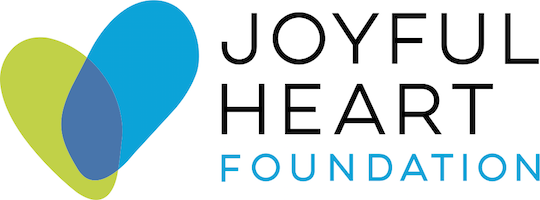You can leave this site quickly.
Learn more about Internet safety.
Creative Expression
Healing Benefits of Creative Expression
“There is no agony like having an untold story inside of you.” —Maya Angelou

When one experiences sexual assault, domestic violence, child abuse or other types of interpersonal violence, a complex set of reactions can come into play. Some of these reactions are physical reactions to trauma and increased nervous system response, some are emotional reactions to a highly distressing event, some are cognitive responses as we try to make sense of the event(s) that occurred, and some are social responses as survivors grapple with community attitudes and social norms around abuse. Because of the many layers of disruption involved, the healing benefits of art are diverse and apply to different aspects of wellness.
Cathy Salser says that engaging in creative expression creates a “window of time to honor whatever comes out, whatever needs to emerge. Whatever it looks like, whether it makes sense or doesn’t make sense. Even if it is just a scribble. It is a way to reclaim what’s been lost or what’s been trapped, whether that is relaxation or safety or possibility or a sense of freedom.”
Art can be an oasis, a place to find relaxation and calm. It can also be used to release pain and unexpressed feelings. As we express and integrate unacknowledged feelings, we honor and integrate our whole selves. Creative expression can be both a way to find calm and a way to release pain, as the state of arousal that occurs as one achieves an emotional catharsis resolves in a state of relaxation once deeply held thoughts and feelings are released.
Using creative expression for healing and wellness can be a large-scale public health intervention strategy, like nutrition. This strategy can be implemented by health professionals and paraprofessionals across the spectrum of care and has benefits for multiple populations. Dr. Jeremy Nobel, MD, MPH and Founder and President of The Foundation for Art and Healing says, “The idea of art having healing capabilities for individuals and society is at least four thousand years old as far as we can tell. This is not new. That said, there are ways of making it available to people as well as to evaluate on a more rigorous scientific basis, to see how it works and how to make it work better."
To that end Dr. Nobel coauthored with Heather L. Stuckey, DEd “The Connection Between Art, Healing and Public Health: A Review of the Current Literature,” published by the American Journal of Public Health, February 2010, Vol 100, No. 2. This article examines the efficacy of using creative expression in healing in multiple types of health settings using multiple artistic modalities, and found the following benefits:
Music engagement, which can include the passive experience of listening to music or the active experience of creating music, was seen to have effectiveness in decreasing anxiety and tension, calming neural activity in the brain, and reducing heart and respiratory rates.
Visual arts are any endeavor that results in a physical work that can be viewed, and includes painting, sculpture, collage, photography or anything else that is expressed visually. Engaging in visual expression has been linked to enhanced self worth and identity through achievement, reduced stress, increased positive emotions, and decreased markers of emotional distress. It also results in a desire to continue in the healing process.
Movement, including formal, informal and free form dance, has been observed to contribute to a positive body image as well as increased self-awareness, problem solving abilities, self-esteem, and cognitive and psychological well-being.
Expressive writing, which can involve journaling, storytelling, free writing, poetry, or personal memoir, can improve control over pain, depressed mood, and pain severity. It can also positively affect anger expression, feelings of social support and other general quality of life measures.
CREATIVE EXPRESSION: "The language that lives in the heart and the spirit. It's the language that emerges when you find the safety to really listen to your heart."
Because this article included a survey of available research, the outcomes for different modalities are based on different measures, but it is likely that many creative activities contribute to a common set of physical, emotional, cognitive, social and spiritual gains. Dr. Nobel summarizes the major benefits of creative expression as follows: “Art allows you to do three things, and this is where the healing comes from. Art puts you in the moment, puts you in touch with yourself and allows you to bring forth something that did not exist before. And those three things taken together are incredibly powerful in terms of adjusting your understanding of yourself, your relationship to yourself, your relationship to the world and your sense about possibilities for the future."
Creative expression has elements that are specifically relevant to integrating the experiences of sexual assault, domestic violence or child abuse. Survivors have had the experience of their voices being taken away. That feeling of invisibility is a response to the exposure to a set of events where it was not safe to voice one's boundaries or needs. In some situations it was not safe to have feelings at all. That lack of access to one's inner voice can make a person feel disconnected and unmoored. The results of those feelings can be that a vision of a life where one’s feelings and thoughts and desires are honored and deserving of respect can seem out of reach. According to Cathy Salser, creating art can be the "first step in making something that seems impossible, tangible, visible. It can create the new future of respecting what you feel and think and want.”




Your Voices